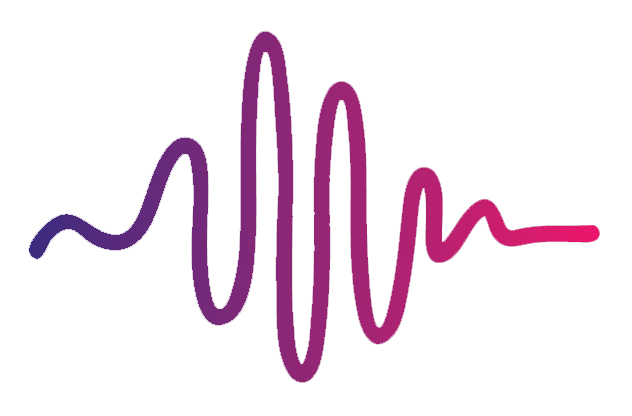The Ultimate Guide to Key Signatures + Cheat Sheets!
As a worship musician, understanding keys and key signatures is crucial for reading sheet music, chord charts, and playing on a worship team. In this comprehensive guide, we will help you gain a rock solid understanding of key signatures—so that you can lead with more confidence and musicality!
So let’s jump in!
But first… Cheat Sheets!
Before we jump in, we just launched our brand new major key cheat sheets in all keys! So if you feel like you’ve got this stuff down, click the button below. If not, keep reading and learning!
Intro to Key Signatures
Key signatures were designed to simplify the notation and reading of music or lead sheets, and understanding them is essential for every musician. Rather than notating accidentals (sharps or flats) individually throughout an entire piece whenever they occur, key signatures allow composers and musicians to indicate up front the presence of certain accidentals that will occur consistently and universally throughout a song. This streamlines the notation process and makes it easy to determine the appropriate diatonic chords, scales, and melodic patterns for any given song.
“Key” vs. “Key Signature”
Although these two terms are often used interchangeably, the "key" can be defined as the tonal center of a song. The "key" is represented by a letter in the musical alphabet, with or without an accidental attached to it, and it is often followed by a "major" or "minor" denotation (ex. F# major, D minor, E major, C# minor, etc.). Each key in music has its own unique DNA (“signature”) of sharps and flats built into it, which differentiates each key from the others.
When a song is established in a certain key, it resolves to the chord built on that letter. This is otherwise known as the “home chord”. For example, a song in the key of Bb major indicates that the home chord of the song is a Bb major chord.
ⓘ If a song is in a major key, it is common to reference the letter name only and omit the “major” signifier. For example, instead of “F# major”, you would say “key of F#”.
The term “key signature” refers to the amount of sharps or flats that are inherently used when playing in a specific key. For example, the key signature of Bb major is 2 flats. All chords, melodies, or harmonies that you play in that key should include those 2 flats. And if you don’t know what notes are supposed to be flat, keep reading below!
Identifying Keys: Sheet Music
In traditional sheet music, key signatures are usually given to you. They are visually represented by a specific arrangement of sharps (#) or flats (b) at the beginning of a musical staff. These symbols indicate the key of the song and are placed in a pattern that corresponds to the specific key.
Example: Bb major
There are three shortcuts for identifying the key of the song using your sheet music:
Shortcut 1 - Sharps (#):
Find the last sharp on the staff. The key of the song will be one semitone above it. For example, if the last sharp is G#, the key of the song is A major.Shortcut 2 - Flats (b):
The key signature of the song is the second last flat on the staff. For example, if the second last flat is Ab, the key is Ab major.Shortcut 3 - Memorize the Circle of Fifths:
The circle of fifths is a great visual aid to help identify keys. If you memorize it, you’ll be able to identify a key based on how many sharps or flats you see on the page.
For more info on the circle of fifths, read below.
Identifying Keys: Chord Charts
In lead sheet notation, where chords are placed above lyrics, the key signature is not visually represented and as a result, the key is more difficult to identify. It is up to you to examine the chord symbols, analyze the relationship between them, and identify the key
signature yourself.
Here are a few steps that you can take to identify the key signature of a chord chart:
Identify the starting chord and/or the end chord of the song:
It is common for songs to end on their home key. If the song starts and ends on the same chord, it is most likely the key of the song. However, this rule does not always apply because some songs start and end on other diatonic chords instead of the home key. Take the above chord chart for instance; It is in the key of D, but starts on a G chord.Identify the most commonly occurring chord symbol:
Scan through the chord symbols provided in the lead sheet and look for the major chord symbol that appears most frequently. For example, if you notice that the chord symbol "G" appears multiple times while other major chords occur less frequently, it is likely that the song is in the key of G major. However, this rule does not always apply either.Look for the corresponding major scale:
Once you think you have identified the key, refer to the major scale associated with that key. Play through the scale, making note of any accidentals. Go back to the song and cross-reference the chords on the chart with the major scale to see if their notes match.Analyze the overall tonal center:
Take a step back and listen to the song or analyze the melody to confirm that the chords and melody revolve around the determined key signature. Pay attention to the resolution points and how the song feels musically centered on a particular note or chord. This will provide further confirmation of the key signature.Note any changes in key within the song:
Occasionally, songs may have sections or parts where the key changes temporarily. In such cases, the key signature may shift, and you will need to identify the new key signature based on the chord symbols and musical context.
Identifying Key Signatures: Circle of Fifths
The most common method of identifying key signatures is to use the circle of fifths, which is helpful in two situations:
Situation 1 - When you know the key the song is in, but don’t know the key signature (how many #/b to use).
Situation 2 - When you know the key signature of the song (how many #/b), but you don’t know which key it belongs to.
Here's how to use it:
Start at the top:
The top of the circle represents the key of C major or A minor, which has no sharps or flats in its key signature.Move clockwise:
Moving clockwise around the circle, each key is five notes higher than the previous one. As you move around the circle, each clockwise movement adds one sharp to the key signature. For example, the first key after C major is G major, which has one sharp (F#). The next key, D major, has two sharps (F# and C#), and so on.Note: The reason why F# is first and C# is second is because there is a universal pattern to the order of sharps. To remember the order, use the following mnemonic:
Father Charles Goes Down And Ends Battle
F# C# G# D# A# E# B#Move counter-clockwise:
If you move counterclockwise from C major, each key is a fifth lower than the previous one. As you move around the circle, each movement adds one flat to the key signature. For example, the first key after C major is F major, which has 1 flat (Bb). Followed by Bb major (Bb, Eb), and then Eb major (Bb, Eb, Ab), and so on.Note: The reason why Bb is first and Eb is second is because there is a universal pattern to the order of flats. To remember the order, use the above mnemonic in reverse:
Battle Ends And Down Goes Charles’ Father
Bb Eb Ab Db Gb Cb Fb
ⓘ Major keys and their relative minor keys share the same key signature. For example, C major and A minor have no sharps or flats, while G major and E minor have one sharp (F#), and so on.
Check out our key signature cheat sheets!
Our cheat sheets give you everything you need to know about every key signature at a glance. Check out the cheat sheets below:





